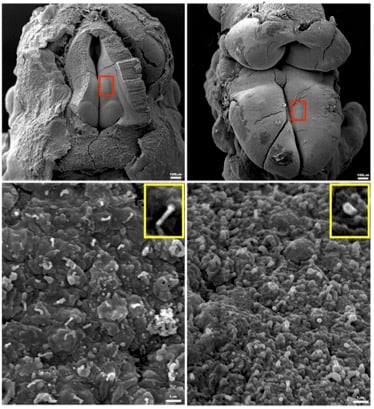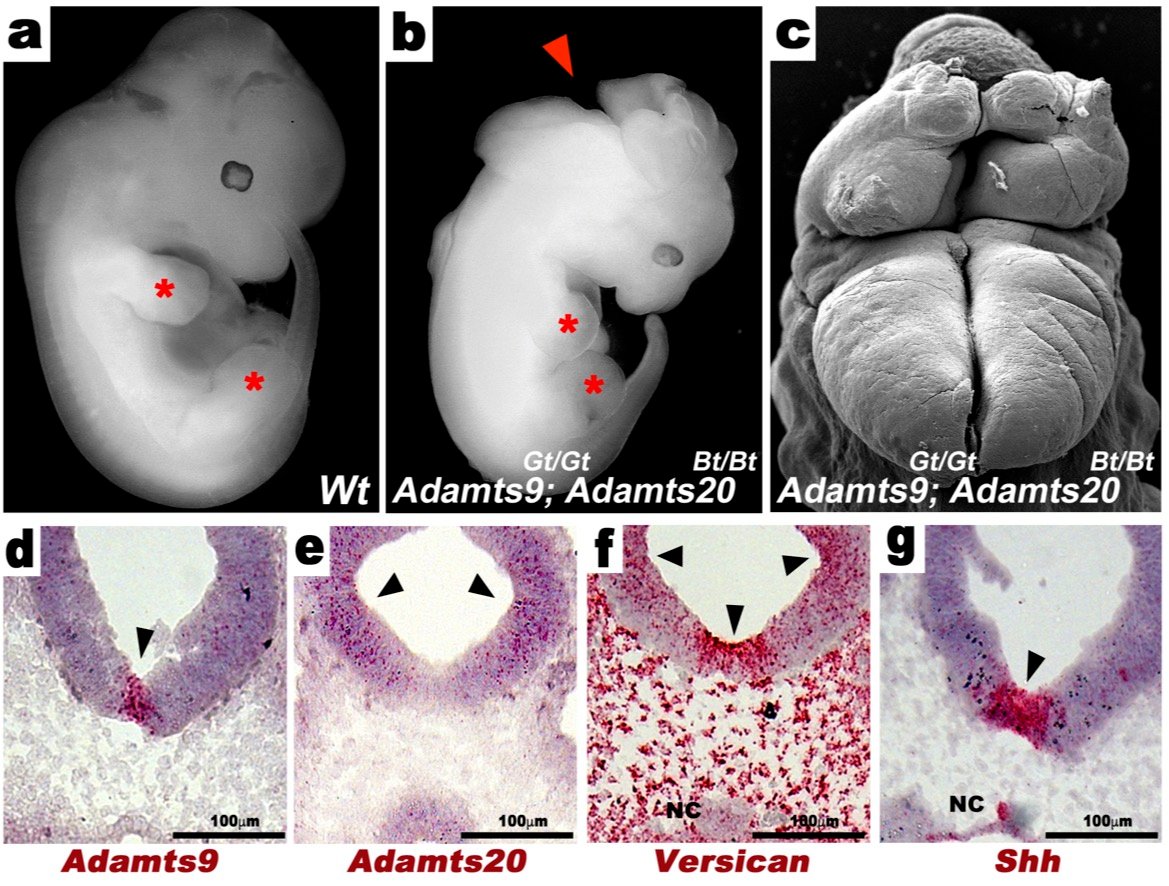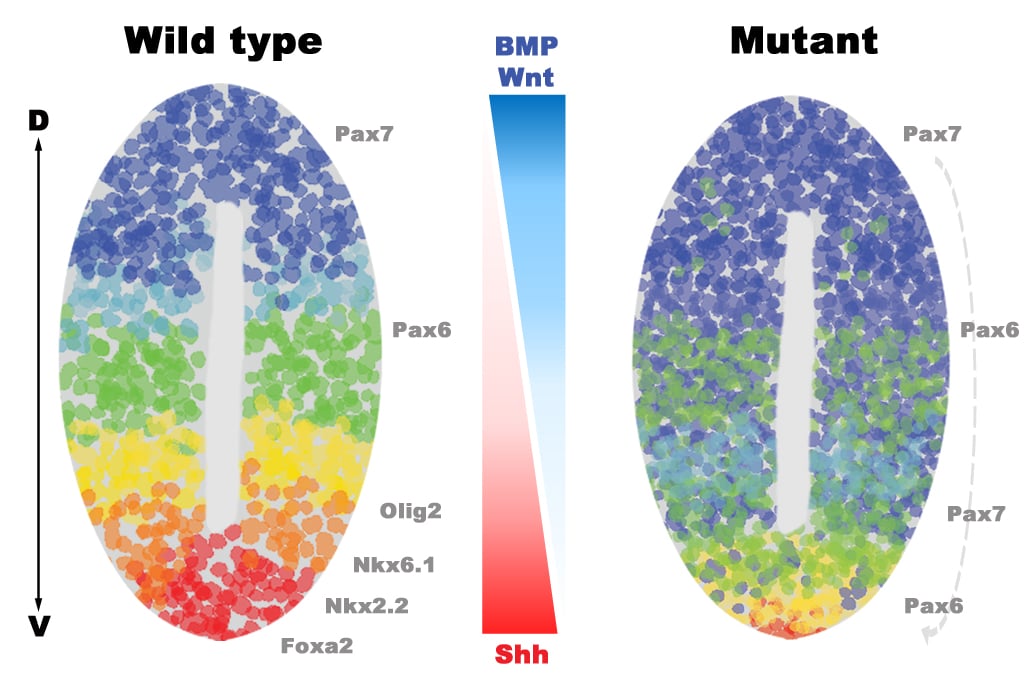Neural tube development

The neural tube gives rise to our future brain and the spinal cord. It is formed by a flat sheath of epithelial cells rolling into a tube during early stages of development. This morphogenic process is highly regulated by the orchestrated apical constriction of neural epithelial cells leading to midline invagination and lateral inward invagination of the neural plate (Nandadasa et al., Development 2009).
Hedgehog signaling made by the notochord and the ventral neural tube, and Wnt/BMP produced by the dorsal cells establishes the positional identity of the neural epithelial cells. Establishing these signaling gradients are crucial for normal neural tube morphogenesis and neural patterning. Primary cilia, which are crucial for hedgehog signaling, plays an important role in neural tube development. One of the most clearly evident birth defects present in Adamts9+Adamts20 mutants is exencephaly (image-1, Nandadasa et al., Nature Communications 2019), a severe neural tube defect caused by the loss of rostral neural tube closure. Adamts9+Adamts20 mutants have severely short primary cilia (image-2) in the neural epithelium and show a complete loss of hedgehog signaling and ECM accumulation. In the absence of Adamts9+Adamts20, the dorsal Wnt/BMP signaling gradient is expanded ventrally and patterning of the mutant neural tube is completely disrupted (image-3).

In future studies we will continue to investigate ADAMTS9 and ADAMTS20 substrates and their role in neural tube morphogenesis. Particularly, we will investigate if the novel ADAMTS9 substrate TMEM67 and if its cleavage is essential for neural tube closure and gradient formation in mice. TMEM67 mutations cause Meckel syndrome (MKS), a severe and lethal condition similar to exencephaly caused by the malformation of the rostral neural tube.

